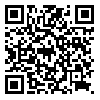BibTeX | RIS | EndNote | Medlars | ProCite | Reference Manager | RefWorks
Send citation to:
URL: http://jdisabilstud.org/article-1-2313-en.html
2- Associate Professor of Psychology, Shahid Bahonar University, Kerman, Iran
3- Assistant Professor of Psychology, Islamic Azad University of Zarand, Kerman, Iran
Abstract
Background & Objectives: Obsessive–compulsive disorder (OCD), in the Diagnostic and Statistical Manual of Mental Disorders (DSM–5), is classified as a dependent disorder in which the person experiences thoughts and mental images with disturbing and repetitive impulses called obsessions. Untreated OCD causes psychological damage and many social and economic complications for patients. Numerous studies have indicated high levels of alexithymia in people with OCD. People with alexithymia have problems identifying emotions, describing emotions, and external intellectual orientation; they have defects in cognitive processing and regulation of their emotions. Coping styles seem to be related to obsessions. Coping styles are a person's cognitive and behavioral efforts to correct a stressful situation and reduce the pain caused by it. The present study aimed to predict alexithymia according to coping styles in people with OCD.
Methods: The present study was descriptive correlational. The study population consisted of all patients with OCD referred to psychiatric clinics in the city of Kerman, Iran, in 2018–2019. According to the formula n=50+8m by Tabachnick et al. (2007) and considering the possible dropout and some incomplete questionnaires, 200 people were selected as the sample size. Referring to the psychiatric clinics, the samples in this study were selected among the people diagnosed by a psychiatrist as patients with OCD. Then, the Maudsley Obsessive Compulsive Inventory (MOCI) (Hodgson & Rachman, 1977) and a brief interview were implemented on the samples. The samples were selected among the patients treated on an outpatient basis for the first time or were in the early stages of treatment. The samples were trained on how to answer the questions after accurately identifying the type of disease. The inclusion criteria included a diagnosis of OCD based on clinical interviews and confirmation of diagnosis by a psychiatrist, being at least 15 years old, and having at least guidance school degree. The exclusion criteria included psychotic disorders, Tourette's disorder, drug dependence, epilepsy, psychotic symptoms, uncontrollable bipolar disorder, using any type of psychiatric medication, or psychological services. The subjects were assured that the information would be confidential. During the research, it was attempted to avoid activities that endanger the participants' health. The research tools were the Maudsley Obsessive Compulsive Inventory (MOCI) (Hodgson & Rachman, 1977), Ways of Coping Questionnaire (Folkman et al., 1986) and Toronto Alexithymia Scale (TAS) (Bagby et al., 1994). Data analysis was done using descriptive statistics (mean, standard deviation, percentage, and frequency) and inferential statistics (the Pearson correlation coefficient and multivariate regression analysis) in SPSS version 23 software. A significance level of 0.05 was considered in all tests.
Results: The results showed that seeking social support (β=–0.162, p<0.001), responsibility (β=–0.345, p<0.001), problem–solving thoughtfully (β=–0.157, p<0.001), positive reappraisal (β=–0.123, p<0.001), confrontation (β=–0.123, p<0.001), avoidance (β=–0.118, p<0.001), self–control (β=–0.270, p<0.001) and escape–avoidance (β=–0.259, p<0.001) had a predictive role in explaining alexithymia. Also, 85.4% of the variance of alexithymia was explained based on coping styles and obsessive–compulsive disorder.
Conclusion: According to the findings of this study, problem–oriented and emotion–oriented coping styles can predict alexithymia in individuals with OCD. Therefore, coping styles have a significant contribution to alexithymia.
| Rights and permissions | |
 |
This work is licensed under a Creative Commons Attribution-NonCommercial 4.0 International License. |



